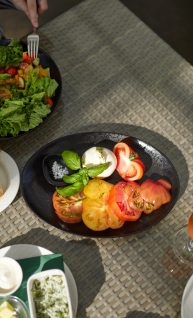
At Friðheimar we strive to grow the tastiest tomatoes we can, while respecting nature.
Our tomatoes are cultivated all year round using the latest technology, in an environmentally-friendly way: green energy, pure water and organic pest controls combine to produce fresh, healthful tomatoes.

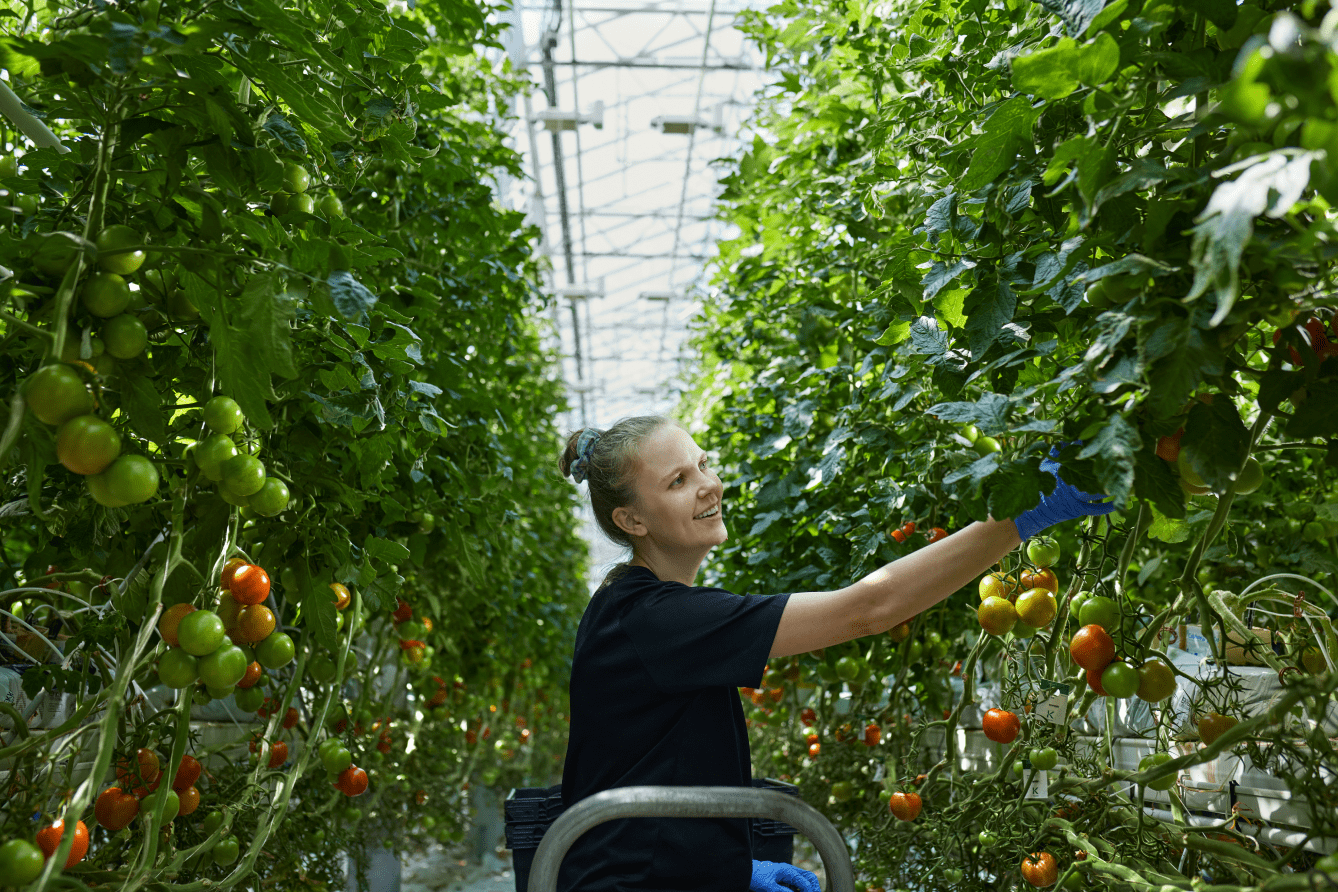
What we grow and how
Ever since they moved to Friðheimar, Knútur and Helena have specialised in cultivating tomatoes. They are keen to increase diversity in the Icelandic tomato market, and have introduced new cultivars from time to time. They were the first growers, for instance, to cultivate plum tomatoes and Flavorino cocktail tomatoes in Iceland on a year-round basis. Most recently they have introduced the delicious Piccolo tomato.
At Friðheimar, the principle has been to grow tomatoes with optimum taste quality, while maintaining eco-friendly standards. The tomatoes are now grown all year, using state-of-the-art technology in an environmentally-friendly way. Green energy, pure water and biological pest controls make for tasty and healthful tomatoes.
Knútur and Helena have striven to keep up with developments in the field, and made many study visits to neighbouring countries to learn about cultivation methods, build up networks, and enhance their knowledge. They have set themselves high standards in their production, and are reaping the benefits. In 2009 they were awarded the
Agricultural University of Iceland Incentive Award, and in 2010 they were chosen Growers of the Year by the Horticultural Marketing Association. In 2011 they received the Encouragement Reward of Icelandic Farm Holidays.
Piccolo tomatoes
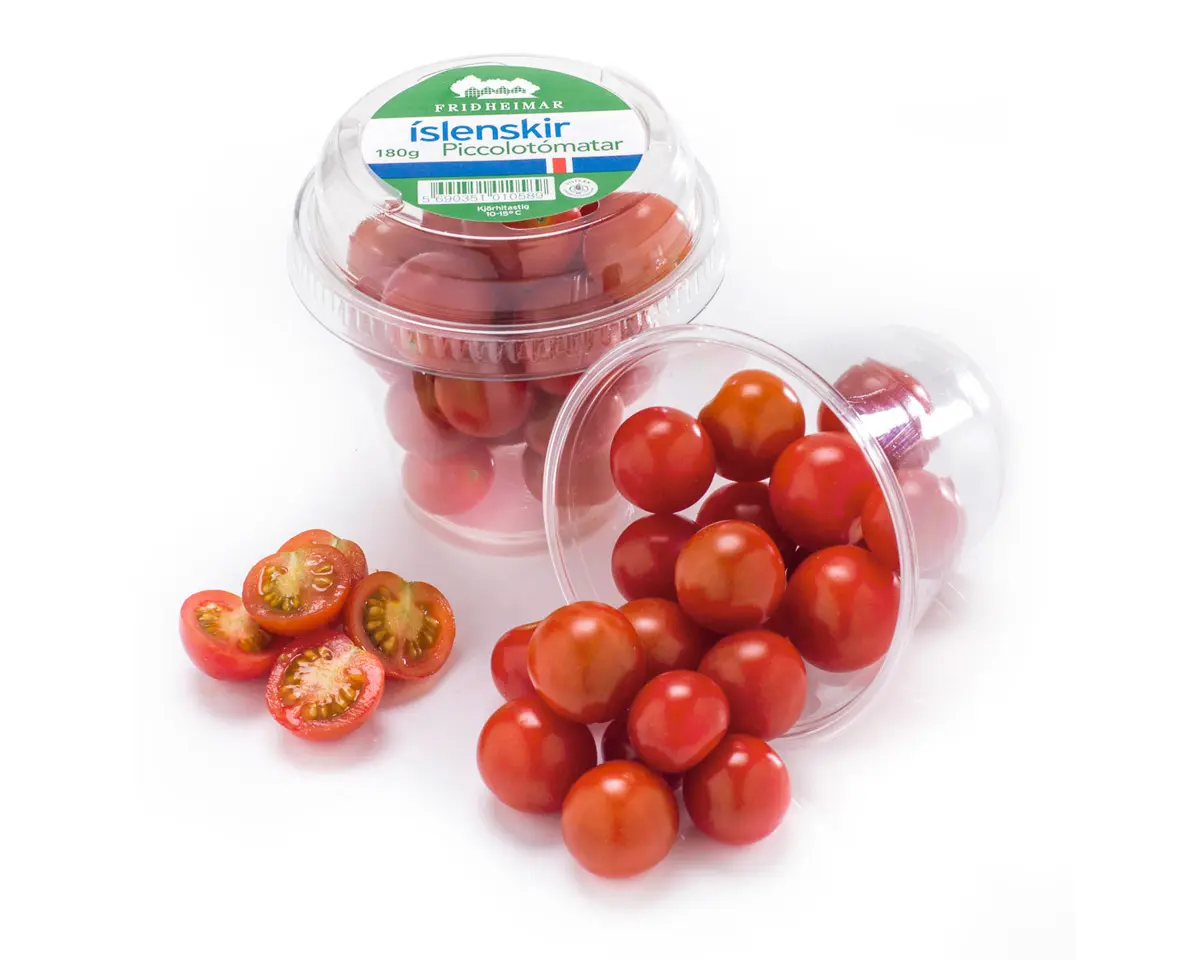
Plum tomatoes
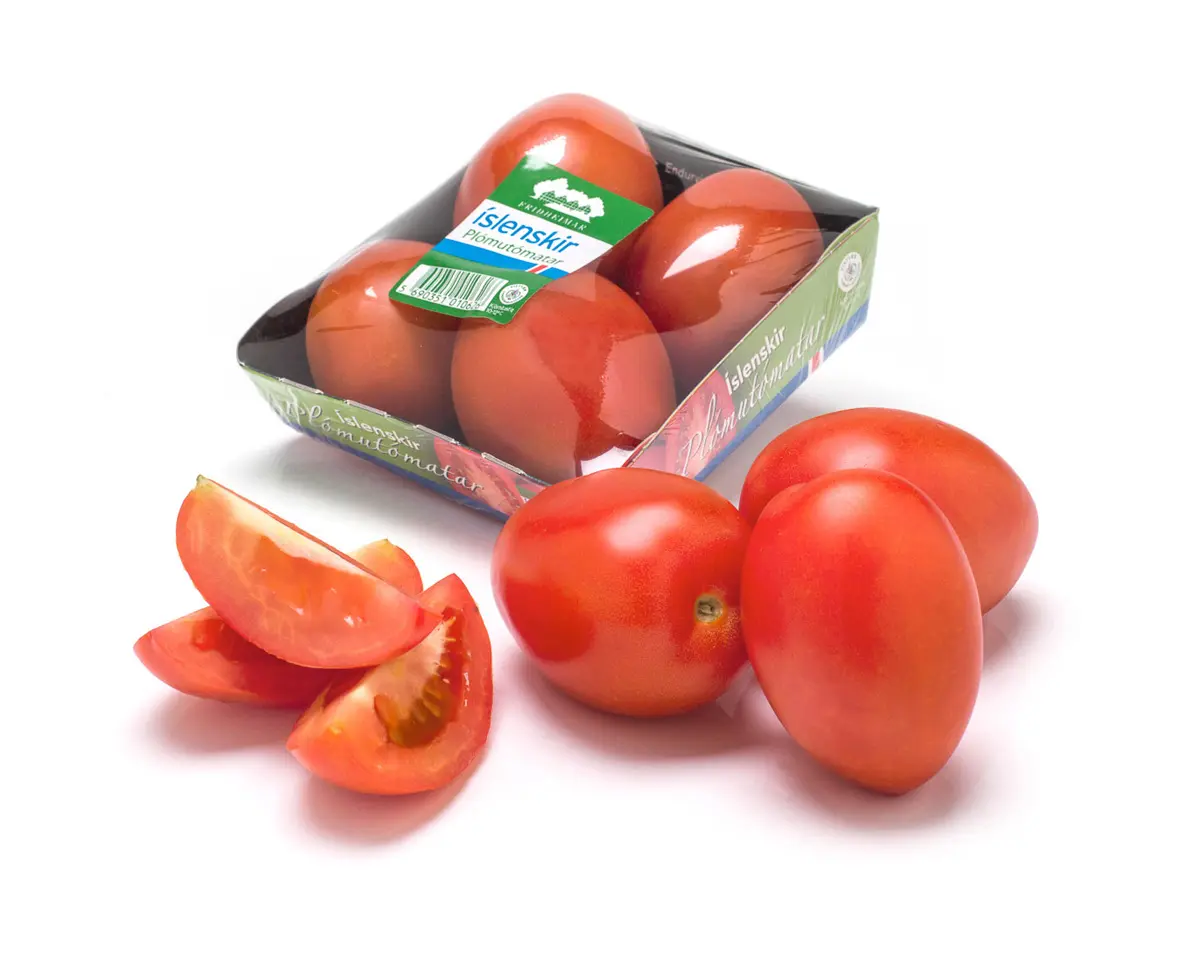
Traditional tomatoes
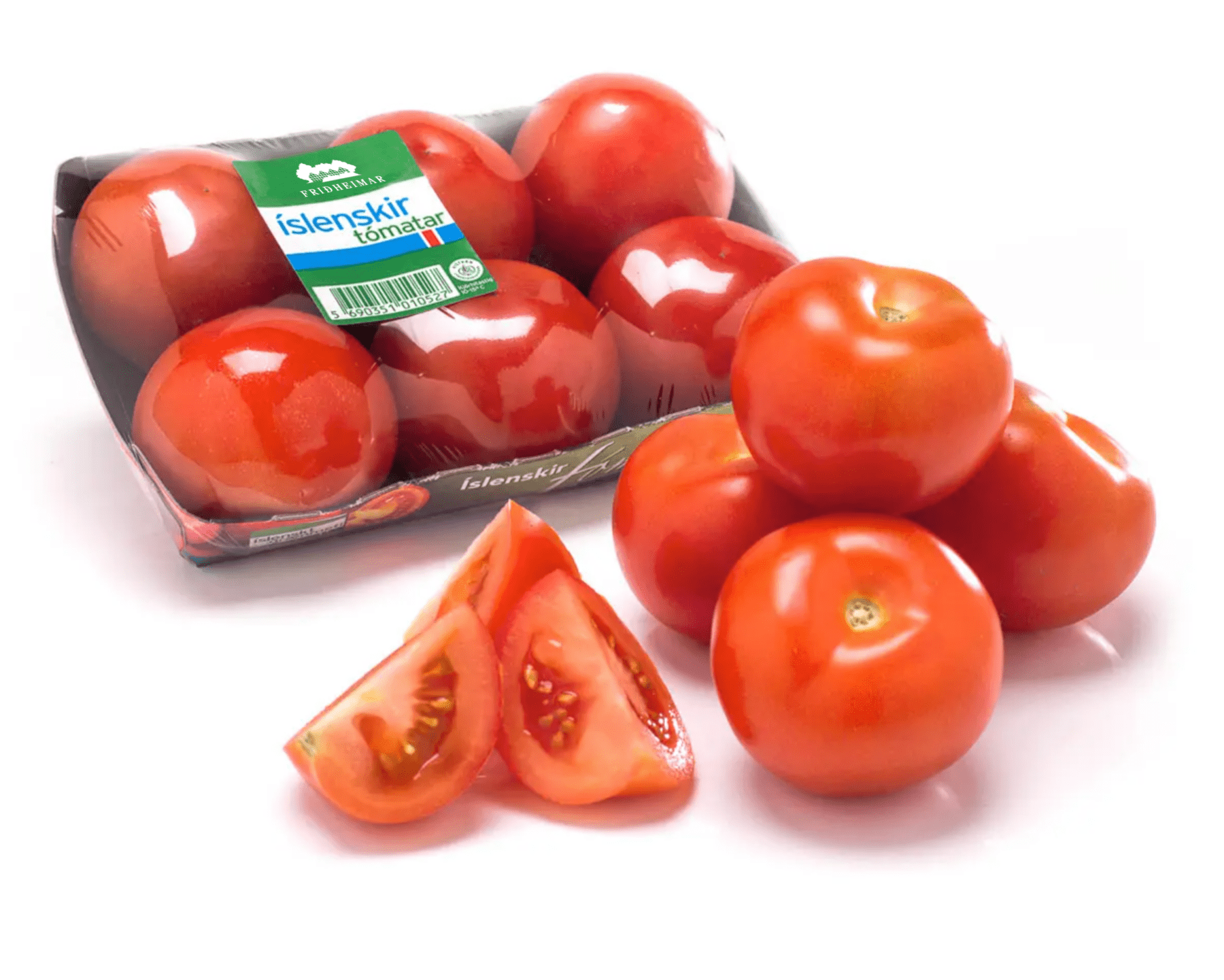
Heirloom tomatoes
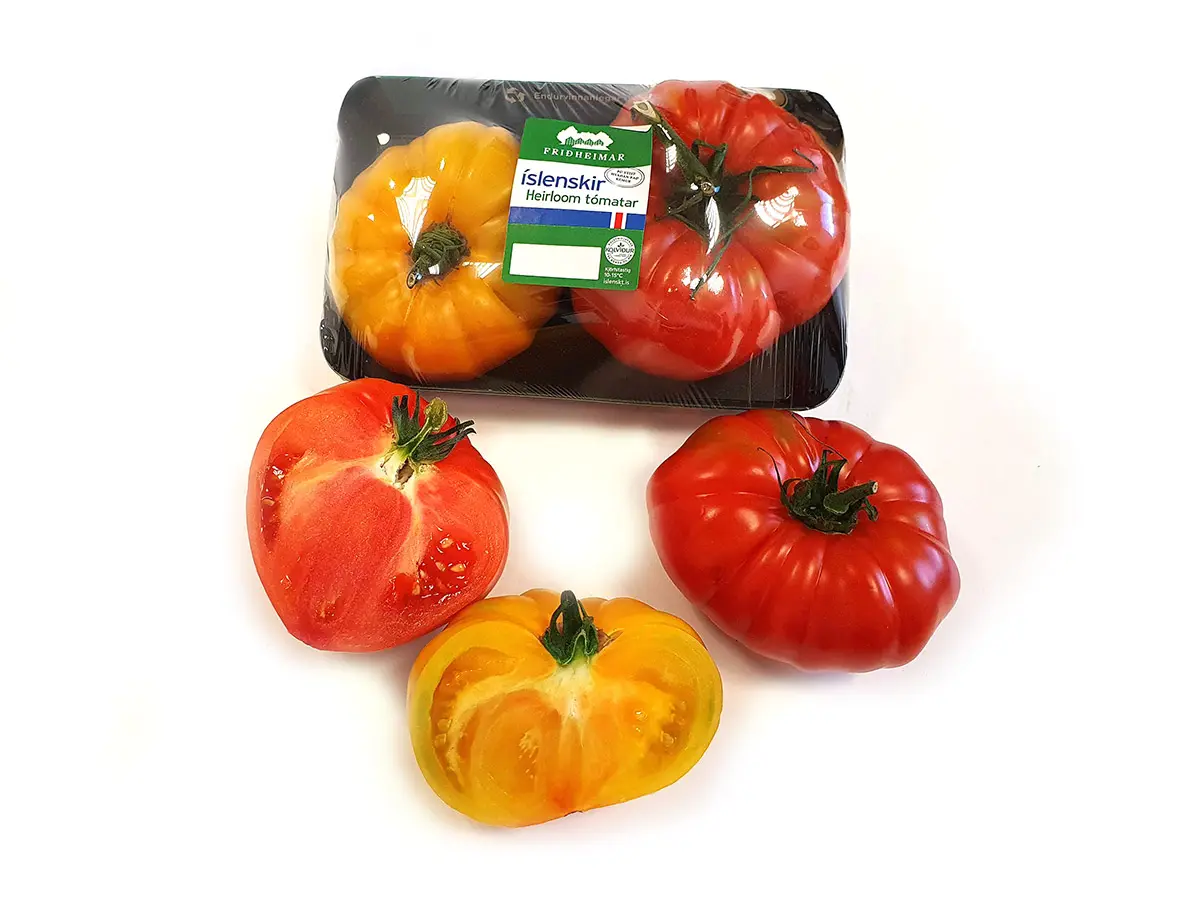

Piccolo tomatoes
In 2012, we learned about a very intriguing cherry tomato we were lucky enough to try. These tests led us to fall for these tomatoes, which were tiny, extremely sweet with good acidity, juicy and crisp. Kind of a real treat. These were Piccolo tomatoes.
One of the things that makes Piccolo tomatoes special is that it is not enough to call your supplier and order seeds as you can with most tomatoes, you need to get a special license. The seeds are produced by a small company in the Provence region of France, founded in 1952, which is owned and run by Jacques and Veronique Gautier. The Gautier family produces all kinds of vegetable seeds and in 2008 they dropped a uniquely tasty and good tomato that they decided to call Piccolo.
Instead of putting the seeds on general sale, it was decided to get the top growers in each country to grow this variety and try to keep it as a unique quality product, a true gourmet tomato. Thus, a remarkable community of growers around this wonderful variety has been formed, who meet twice a year to share their knowledge about the cultivation and quality. The group always meets in different places, in greenhouses, so a great friendship has developed and a strong network has been formed.
Piccolo tomatoes are small cherry tomatoes, about 12 g each, which we harvest as both free and cluster tomatoes. They are a little challenging to grow and it is both time-consuming to grow and harvest them because of their small size and the number of tomatoes on the cluster. A key part of growing the Piccolo tomatoes is to allow them to grow to maturity on the plants, thus reaching the right sweetness and maximum flavour – and then harvest them at the right moment. We mark the tomato boxes with the Piccolo tomatoes name, the Friðheimar logo and a picture of our husband and wife, which we think is a fun way to shorten the path between the farmer and the consumer.
At Friðheimar we strive to grow the tastiest tomatoes we can, while respecting nature.Knútur & Helena
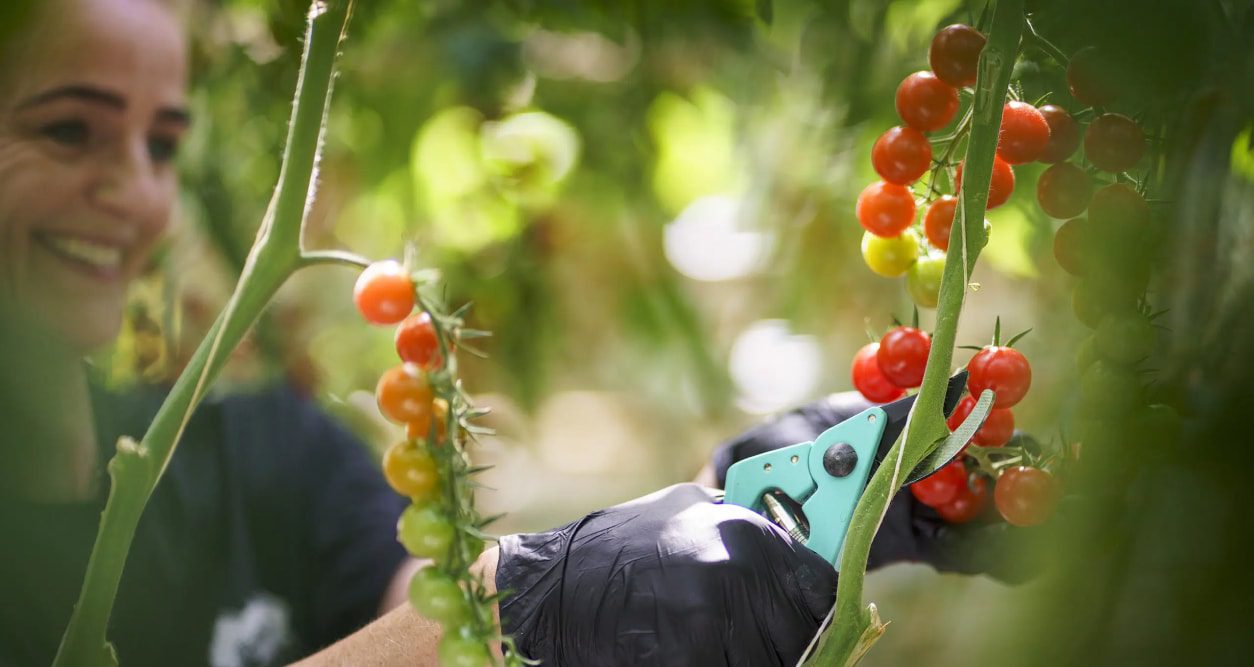


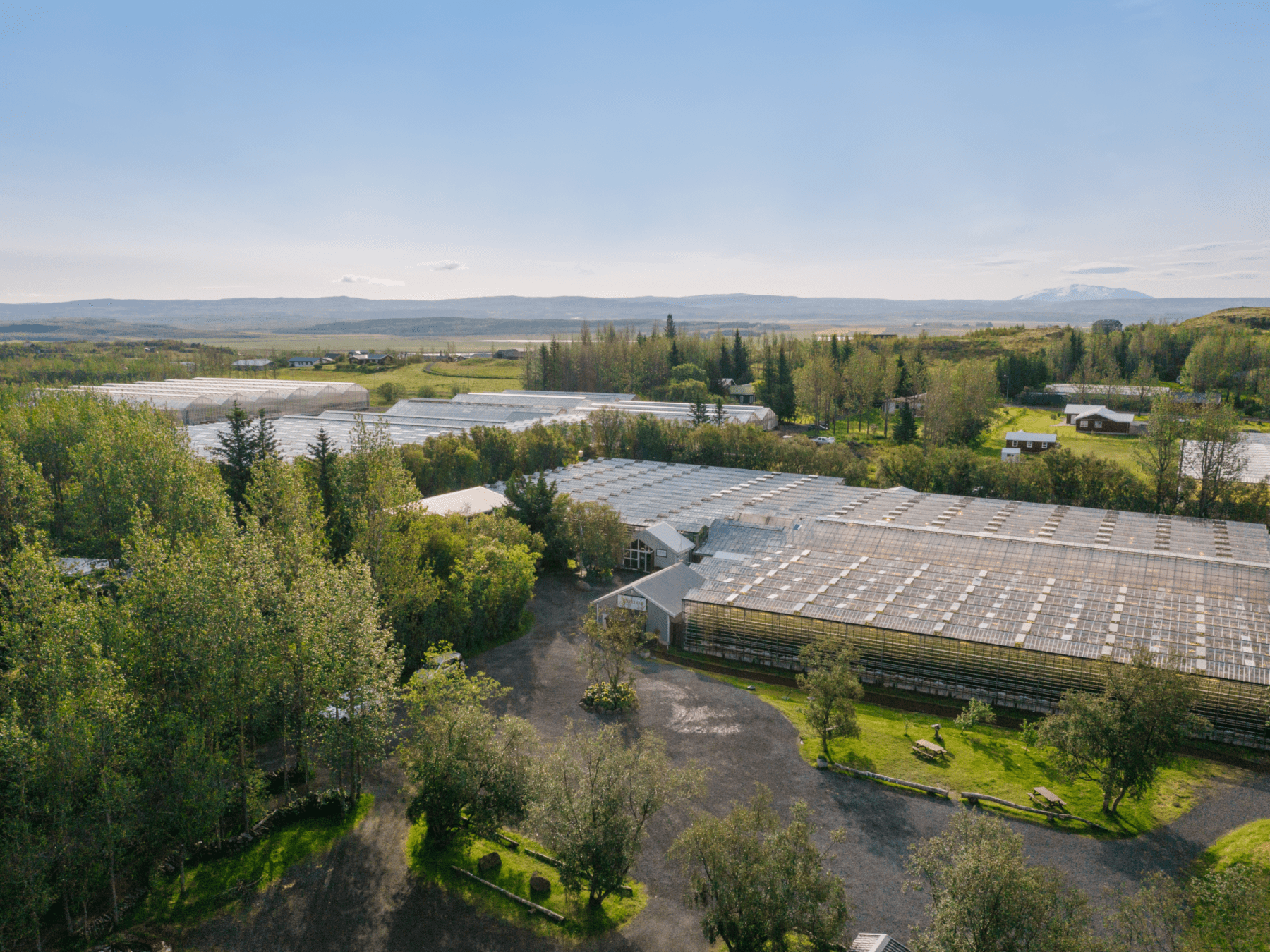
Growing method
Each greenhouse has a controller that controls heat, humidity, carbon monoxide and lighting. The controller links to the fertilizer mixer, which irrigates based on precise guidelines. A weather station on the roof gives information on wind strength, wind direction, temperature and light. When the sun shows up and the inlet reaches a certain level, the lights go out – and then light up again when necessary. All this is connected to the mother computer, which is connected to the Internet. The Friðheimar can thus access the Internet wherever they are in the world, monitor the situation, change the values and control the watering.

The farmers at Friðheimar
Knútur and Helena have specialised in tomato cultivation since their beginnings in the Friðheimar region. They are eager to diversify the tomato market in Iceland and have tried new varieties every now and then. For example, they were the first to grow whole-year tomatoes in Iceland, and the most recent product is the delicious Piccolo tomatoes. The Friðheimar farmers quickly decided to grow the tomatoes with the highest possible flavour and in harmony with nature.
Knútur and Helena have tried to keep an eye on the profession and have taken a number of educational trips to neighboring countries to learn about farming methods, build relationships and gain knowledge. They have been very ambitious in their production and have harvested it.
They received the Agricultural University of Iceland’s Encouragement Award in 2009 and were voted Farmers of the Year by the Horticultural Trade Association in 2010. They were also awarded the Encouragement Award for Farmers’ Travel in 2011 and the Agricultural Award for Entrepreneurship and exemplary farming in 2014. In 2017 we got Embla, the Nordic food award, Fjöreggið for an inspiring work in the field of food- and nourishment, Tomato Spiritation Event for being one of the 100 most innovative tomato growers in the world, and the innovation prize of the Icelandic Travel Industry Association. In the year 2019 we got an educational prize from the Confederation of Icelandic Enterprise. We were chosen as an exemplary company of the year by Responsible Tourism in Iceland. In the year 2022 we received a knowledge prize from Association of Business and Economists and in the year 2023 we received the prize “The merchant of the year” from Þjóðmál.

Our bumblebees
To all of Friðheimar’s staff, the bees are the most industrious, if you will. We have around 1200 bees, which are actually called hops in Icelandic, working to sow the flowers on the tomato plants so that the crops will be good.
Each bee can pollinate 2,000 flowers per day if the conditions are favourable, and does not breed off when we are talking about 25,000 plants, each one with two or four flowers open each day.







